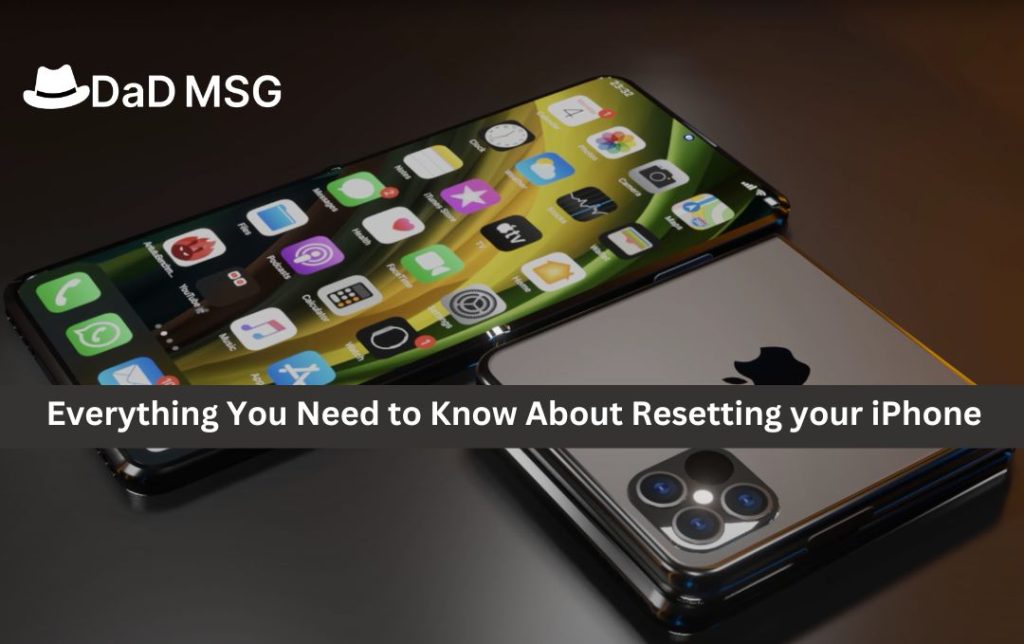Introduction:
Our smartphones have grown to play a crucial role in our daily lives in the fast-paced digital world of today. The iPhone is one of the most well-liked cellphones on the market and stands out for its intuitive UI and comprehensive functionality. However, there may be a point when you have to reset your iPhone in order to fix a number of problems or get it ready for sale. We will cover all you need to know about resetting your iPhone in this detailed guide, including how to back up your data and restore factory settings.
Section 1: Why Resetting your iPhone Might Be Necessary
Sometimes, resetting your iPhone can be an effective solution for addressing a range of issues such as:
- Fixing software bugs: If your iPhone frequently freezes, crashes, or has unresponsive apps, performing a reset can help resolve any software-related problems.
- Increasing performance: Your iPhone’s performance may drop as extra data is accumulated over time. Your device’s speed and responsiveness can be improved by doing a reset.
- Reselling or giving away your iPhone: It’s important to restore your iPhone to its factory settings before selling or giving it away to make sure all of your personal information is gone.
Section 2: Backing Up Your iPhone
Before resetting your iPhone, it is crucial to back up your data to prevent permanent loss. Follow these steps to create a backup:
First, join a Wi-Fi network with your iPhone and open the “Settings” app.
Step 2: Tap on your Apple ID at the top of the screen, then select “iCloud.”
In step 3, select “iCloud Backup” by scrolling down.
Step 4: Enable “iCloud Backup” by switching it on and selecting “Back Up Now.”
Step 5: Make sure your iPhone is turned on and connected to Wi-Fi until the backup process is complete.
You may quickly and simply restore your personal data, apps, and settings after the reset by backing up your iPhone.
Section 3: How to Reset Your iPhone
After backing up your iPhone successfully, you can start the reset procedure. There are two main methods to reset your iPhone:
- Soft Reset:
The quickest and easiest approach to fix minor problems without losing your data is to perform a soft reset. To execute a soft reset, adhere to following steps:
Step 1: Press and hold the volume up or down button, together with the power button (found on the right side or top of your iPhone), until the power off slider displays.
Step 2: Drag the power off slider to the right to turn off your iPhone.
Step 3: After a brief pause, continue to hold down the power button until the Apple logo appears. Your iPhone should restart, and any minor problems should be resolved.
- Factory Reset:
A Factory Reset erases all data and settings on your iPhone, returning it to its original factory state. To perform a Factory Reset, follow these steps:
Step 1: Launch the iPhone’s “Settings” app.
Step 2: Select “General,” then “Reset” by scrolling down.
Tap “Erase All Content and Settings” in step three.
Step 4: Type your passcode and Apple ID password when prompted.
Step 5: Select “Erase iPhone” to confirm the reset.
Step 6: The reset procedure will commence after your iPhone restarts. This could take a while.
Section 4: Restoring Your iPhone After Reset
You can use the backup you made earlier to restore your data after your iPhone has been reset. This is how you do it:
When you get to the “Apps & Data” screen after turning on your iPhone, proceed with the initial setup steps.
Second step: Click “Restore from iCloud Backup” and use your Apple ID to log in.
Step 3: From the list of accessible backups, select the backup you wish to restore.
Step 4: The restoration procedure may take some time, depending on the size of the backup and your internet connection. Make sure your iPhone is powered on and connected to Wi-Fi during the entire procedure.
Step 5: Your iPhone will restart after the restore is complete, and you can use it with all of your previously backed-up data.
Section 5: Important Considerations and Tips
- Make careful you routinely backup your iPhone: You can have the most recent backup of your data in case of unforeseen events by regularly backing up your iPhone.
- Your iPhone’s reset is permanent: All data, settings, and apps will be permanently deleted after you return your iPhone to its factory settings. Before moving on, make sure you make all the necessary backups.
- Take away your private information: Make sure to erase your personal information from your iPhone by resetting it to factory settings before you sell or give it away. To safeguard your privacy and stop illegal access to your data, take this important action.
- Update the software on your iPhone: The software on your iPhone can be updated frequently to help prevent software-related problems and assure peak performance.
Read More:- Apple Has Released New Accessibility Updates
Conclusion:
Resetting your iPhone can be a good way to fix a variety of software problems, improve speed, or get ready to sell your device. You may confidently reset your iPhone without worrying about data loss or privacy issues by following the instructions provided in this guide, which also include backing up your data and restoring factory settings. To keep your iPhone operating efficiently and safely, bear in mind to take the required safety precautions and to routinely back up your data.
You can solve issues, boost efficiency, and guarantee the security of your personal data by learning how to reset your iPhone correctly. Accept the procedure of resetting your iPhone as a useful tool in your toolbox for maintaining devices.


